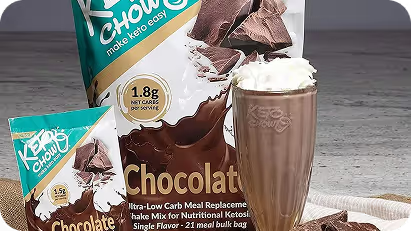9 DTC Subscription Trends to watch out for in 2025
How Loop Subscription can help:
- Customizable customer portal for a seamless subscriber experience.
- Advanced subscription management to meet evolving customer needs.
- Prepaid subscriptions to boost retention and increase value.
- Flexible subscription models to cater to diverse customer preferences.
The subscriptions space is evolving fast. As DTC business owners, you must be aligned with where the industry is moving towards, and at the same time, you should be on top of consumer insights that are ever evolving. As we move into 2025, several key trends are emerging that will significantly impact the DTC subscription landscape. This post explores nine trends that brands should embrace to remain competitive and thrive in the subscription economy.
1. Personalization at Scale
Consumers are becoming increasingly accustomed to personalized experiences, leading to higher engagement and retention rates. According to recent studies, personalized marketing can boost conversion rates by up to 10% or more.
In 2025, brands will harness advanced data analytics and AI-driven technologies to offer hyper-personalized subscription experiences. This could involve tailored product selections based on individual customer preferences, buying behaviors, and even seasonal trends. Brands like Stitch Fix have successfully used algorithms to curate boxes that align with customers’ unique tastes, setting a benchmark for others to follow. Tools like AskTimmy enable DTC brands to deliver similar hyper-personalized shopping experiences directly on their Shopify stores, using AI to understand user intent and recommend the right products in real time. A skincare subscription service might offer personalized regimens based on a user’s skin type, climate, and seasonal needs, utilizing AI to continually refine recommendations based on user feedback and new product releases.
2. Sustainability and Ethical Practices
As awareness of climate change and ethical consumption grows, consumers are increasingly prioritizing brands that reflect their values. In fact, a 2023 survey revealed that 73% of consumers are willing to pay more for sustainable products.
DTC brands in 2025 will need to integrate sustainability into their subscription models, from eco-friendly packaging to sourcing ethical materials. Transparency in the supply chain will also be crucial, as consumers demand to know how their products are made.
Brands like Sips by, a tea subscription service, showcase sustainable sourcing and ethical practices, providing customers with detailed information about the origins of their teas and their environmental impact.
3. Enhanced Customer Engagement through Gamification
Gamification is a powerful tool to increase customer engagement and loyalty. By incorporating game-like elements into their subscriptions, brands can create more enjoyable experiences for their customers.

Loop Subscriptions helps gamify journeys for ecommerce companies - to increase stickiness and product loyalty
In 2025, expect to see more tailored reward and incentivisation flows that keep further increase brand loyalty helping ecommerce businesses realise more revenue per user and reduce churn.
DTC brands implement loyalty programs that reward customers for interaction, such as completing surveys, referring friends, or engaging on social media. Points can be redeemed for discounts or exclusive products.
Case in point: A fitness subscription service could create a challenge where subscribers earn points for completing workouts or sharing progress on social media, culminating in rewards or exclusive merchandise for achieving goals.
4. Omnichannel Experiences
In a world where online and offline shopping experiences are increasingly blended, an omnichannel approach is essential for DTC brands. Consumers expect a seamless experience across platforms, whether they are shopping online or in-store.
In 2025, brands will integrate their subscription services with various touchpoints, including social media, brick-and-mortar stores, and mobile apps. This will create a cohesive experience that keeps customers engaged and informed.
For instance, a clothing subscription service might allow users to try on items in a physical store before subscribing, merging digital and physical experiences to enhance convenience and customer satisfaction.
5. Flexible Subscription Models
As lifestyles become more dynamic, consumers are looking for greater flexibility in their subscriptions. A rigid commitment can deter potential subscribers.
Ecommerce companies are expected to (some already do) offer various subscription options, such as pause-and-restart features, customizable delivery frequencies, and the ability to skip months or swap products. This flexibility will cater to the evolving needs of consumers.

Loop’s Customer Portal offers a host of custom options (upsell/swap/ flows etc)- quick link
Example - A meal kit service company can allow customers to adjust their meal plans weekly based on dietary changes, preferences, or schedule, ensuring they always receive what they want without wasting food.
6. Enhanced Subscription Options with AI and Machine Learning
AI and machine learning are set to revolutionize subscription management by providing insights that enhance customer experiences and operational efficiency.
DTC brands will increasingly rely on AI to forecast demand, automate customer service through chatbots, and analyze consumer behaviour for better product recommendations. This will help businesses tailor their offerings to meet customer expectations effectively.
A pet supply subscription service could utilize AI to anticipate a pet's needs based on age, breed, and dietary changes, ensuring that each box is tailored to the pet's evolving requirements.
7. The Rise of Social Commerce
Social media platforms are no longer just for engagement; they are becoming crucial shopping channels. The integration of shopping features on platforms like Instagram and TikTok has transformed how consumers discover and purchase products.
DTC brands in 2025 will leverage social commerce by creating shoppable posts, running exclusive promotions on social media, and utilizing influencers to drive subscription sign-ups directly from these platforms.
A beauty subscription service might collaborate with influencers to showcase how products are used, linking directly to subscription sign-ups within the platform, creating a frictionless shopping experience.
8. Community-Driven Subscription Models
Consumers are increasingly seeking community connections around their purchases. Subscription services that foster a sense of belonging will stand out in 2025.
Brands can create online communities where subscribers can share experiences, tips, and feedback. Hosting events, both virtual and in-person, will also strengthen these connections.
A book subscription service might establish a monthly virtual book club where members discuss the latest selection, enhancing engagement and fostering a loyal customer base.
9. Integrating Augmented Reality (AR)
Augmented Reality is poised to transform how consumers interact with products online. By providing immersive experiences, brands can enhance the shopping journey.
You should expect more DTC brands to integrate AR features into their subscriptions, allowing customers to visualize products in their own space or virtually try them before purchasing.
A home decor subscription service could offer an AR app that lets customers see how a new piece of furniture would look in their home, improving decision-making and reducing returns.
Summing up
DTC subscription brands must be prepared to adapt to these emerging trends. By prioritizing personalization, sustainability, customer engagement, and technology integration, brands can create meaningful experiences that resonate with consumers. Embracing these trends will foster customer loyalty and position brands for long-term success in the competitive subscription landscape.
By staying ahead of these trends, DTC brands can build stronger connections with their customers and achieve sustainable growth in the years to come.
Table of contents























.png)







.png)





.png)


































